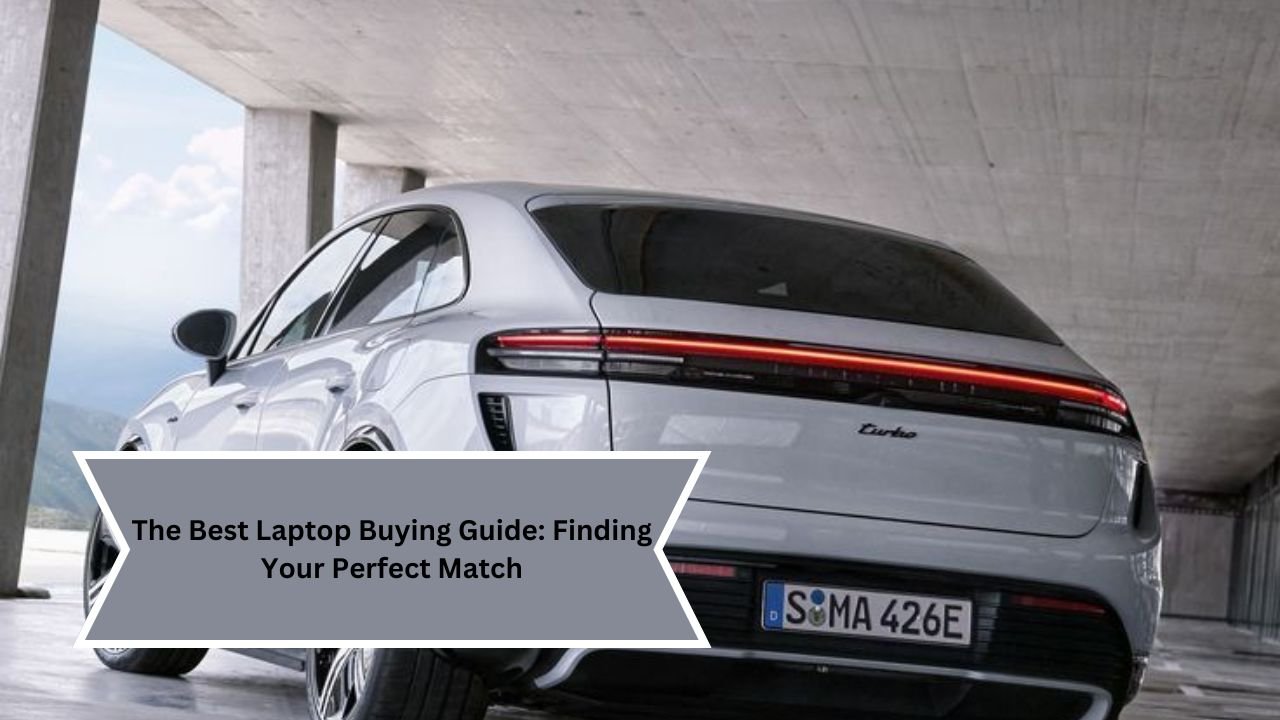In today’s fast-paced digital world, a laptop has become an essential tool for work, study, and leisure. Whether you’re a student, a professional, or someone who just loves to browse the internet, choosing the right laptop can significantly enhance your productivity and enjoyment. With countless options available, it’s crucial to understand your needs and the specifications that matter most. This comprehensive guide will help you navigate the laptop market and find your perfect match.
Understanding Your Needs
1. Determine Your Primary Use
The first step in choosing the right laptop is to assess your primary usage. Are you a student who needs a device for note-taking and research? A professional requiring powerful software for design or data analysis? Or a casual user looking for something lightweight for browsing and streaming? Your intended use will guide your decision-making process.
- Basic Use: For tasks like web browsing, word processing, and streaming, a Chromebook or budget-friendly laptop will suffice.
- Student Use: Consider a mid-range laptop with good battery life and portability.
- Professional Use: If you need software like Adobe Creative Suite or AutoCAD, look for a laptop with a powerful processor and dedicated graphics.
- Gaming: A gaming laptop with a high-end GPU, fast refresh rates, and ample RAM is essential for an immersive experience.
2. Portability vs. Performance
Next, consider how often you’ll be on the move. If you travel frequently or work in different locations, a lightweight and compact laptop will be advantageous. On the other hand, if you primarily use your laptop at a desk, you might prioritize performance over portability.
- Ultrabooks: Slim, lightweight, and usually around 13-14 inches, ideal for mobility.
- Traditional Laptops: Generally offer better performance for a similar price but are bulkier.
Key Specifications to Consider
1. Processor (CPU)
The processor is the brain of your laptop. It significantly affects your device’s performance, so choose wisely.
- Intel Core i3/i5/i7: Suitable for general use, with i7 for heavier tasks.
- AMD Ryzen: Competitive alternatives to Intel, especially Ryzen 5 and 7.
- ARM Processors: Used in some laptops, such as Microsoft’s Surface Pro, offering excellent battery life and performance for casual tasks.
2. Memory (RAM)
RAM determines how many applications you can run simultaneously. For most users:
- 4GB: Minimum for basic tasks.
- 8GB: Recommended for standard use, multitasking, and light gaming.
- 16GB or more: Ideal for professionals in graphic design, video editing, or gaming.
3. Storage
Storage impacts how much data you can store and how fast your laptop operates.
- HDD (Hard Disk Drive): Larger capacity for a lower price but slower speeds.
- SSD (Solid State Drive): Much faster and more reliable; recommended for most users. A minimum of 256GB SSD is ideal.
- Hybrid Storage: Combines HDD and SSD to balance speed and capacity.
4. Display
The display quality can greatly influence your user experience, especially for content creators and gamers.
- Screen Size: Common sizes range from 13 to 17 inches. Choose based on your portability needs.
- Resolution:
- Full HD (1920 x 1080): Standard for most laptops; offers good clarity.
- 4K (3840 x 2160): Ideal for video editing and high-resolution tasks.
- Display Type:
- IPS Panels: Better color accuracy and viewing angles.
- OLED Displays: Exceptional contrast and vibrant colors.
5. Battery Life
Battery life is crucial for on-the-go use. Look for laptops that offer at least 8 hours of battery life. Ultrabooks often excel in this area, but check user reviews for real-world performance.
6. Operating System
Choose an operating system that suits your workflow:
- Windows: Versatile, widely compatible with software and games.
- macOS: Great for creative professionals, known for stability and a user-friendly interface.
- Chrome OS: Lightweight and ideal for web-centric users; typically found on Chromebooks.
Additional Features to Consider
1. Build Quality and Design
A well-built laptop can withstand daily wear and tear. Consider materials (metal vs. plastic), hinge quality, and overall design. If you frequently work in different environments, durability is key.
2. Keyboard and Trackpad
Typing comfort can make or break your experience. Test the keyboard’s responsiveness and size, and ensure the trackpad is smooth and accurate. Backlit keyboards are a plus for low-light conditions.
3. Ports and Connectivity
Make sure your laptop has the necessary ports for your devices. USB-C, HDMI, and traditional USB-A ports are commonly needed. Also, consider wireless connectivity options like Wi-Fi 6 and Bluetooth for faster connections.
4. Warranty and Support
A good warranty can save you from potential issues down the road. Look for manufacturers that offer at least a one-year warranty and consider purchasing additional coverage for peace of mind.
Budget Considerations
Determine your budget before you start shopping. Laptop prices can range from a few hundred to several thousand dollars, depending on specifications and brand. Here’s a general guideline:
- Under $500: Suitable for basic tasks.
- $500 – $1,000: Good for students and general use.
- $1,000 – $2,000: Excellent for professionals needing power and performance.
- $2,000 and above: High-end laptops for gaming, design, and specialized tasks.
Research and Reviews
Before making a purchase, conduct thorough research. Read expert reviews, user feedback, and watch video reviews to get a well-rounded understanding of the laptop’s performance. Websites like CNET, TechRadar, and YouTube channels dedicated to tech reviews can provide valuable insights.
Conclusion
Choosing the right laptop involves understanding your needs, evaluating specifications, and considering additional features. By taking the time to assess what you truly need, you can find a laptop that not only meets your requirements but also enhances your overall digital experience. Remember to balance your desires with your budget, and don’t hesitate to ask for advice or seek out reviews. With this guide, you’re well on your way to finding the perfect match in the world of laptops. Happy shopping!
| HOME | CLICK HERE |
| BUYING GUIDES | CLICK HERE |

